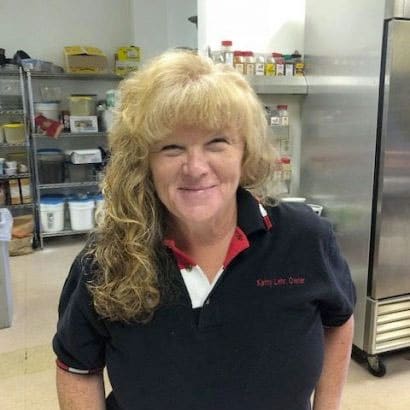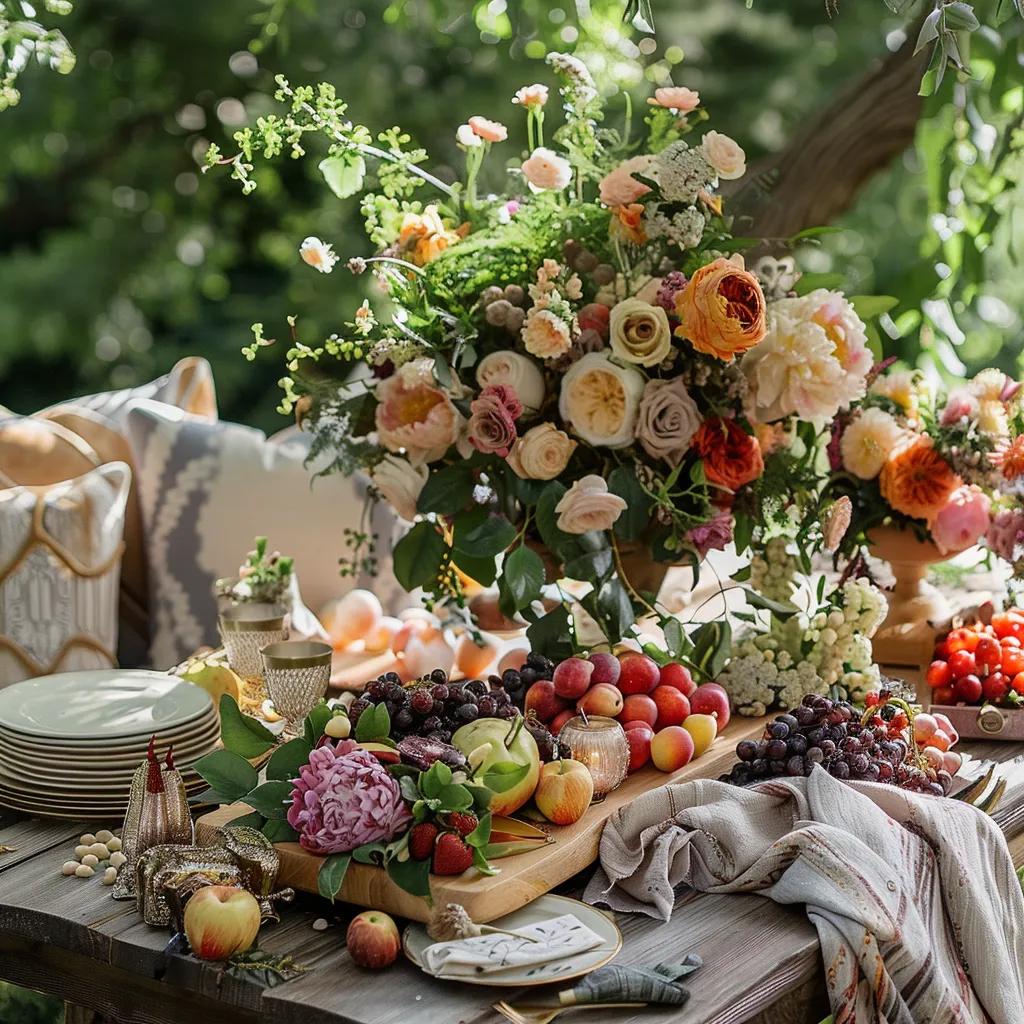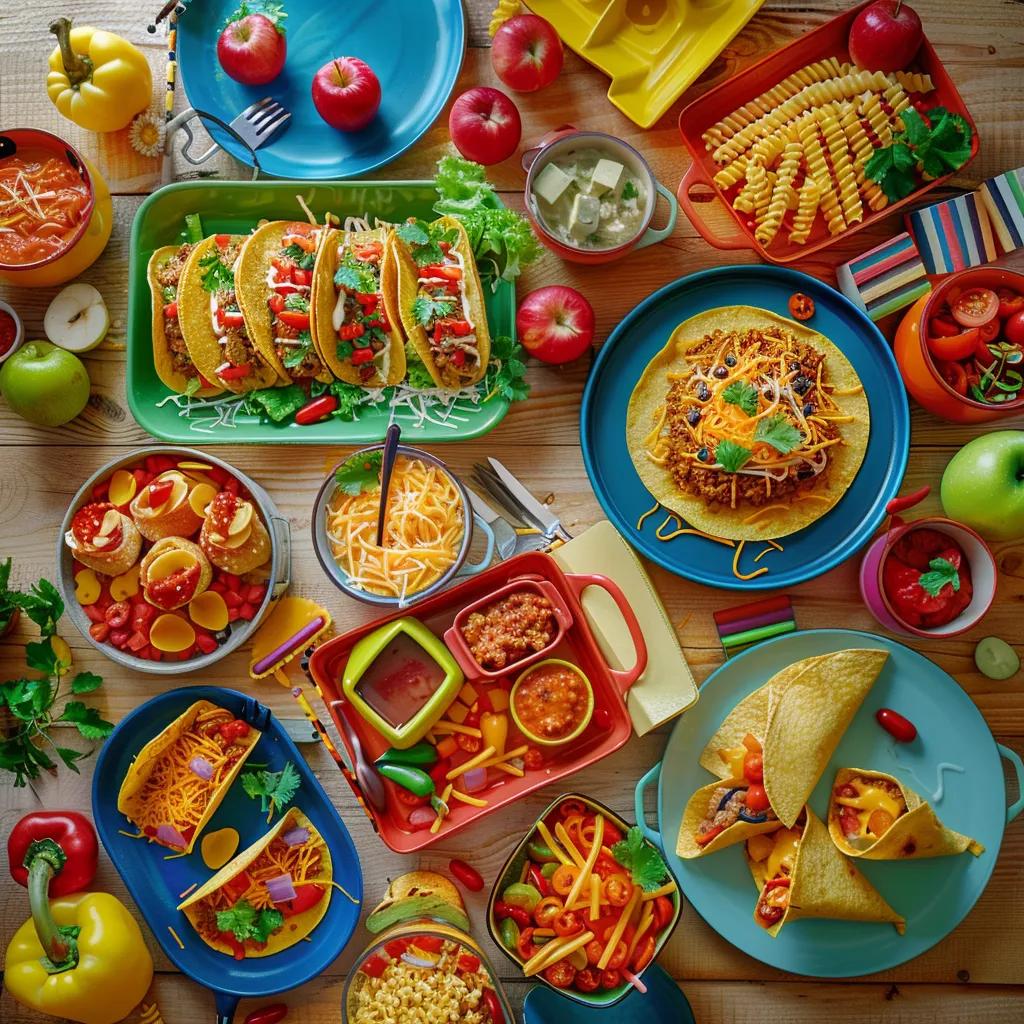Summer music festivals are known for electrifying performances and unforgettable vibes—but for true standout events, the experience extends beyond the stage. Enter VIP catering: a way to elevate the festival atmosphere with gourmet menus, thoughtful presentation, and exclusive service. Creating a VIP catering experience isn’t just about fancy food—it’s about curating moments of comfort and indulgence amid the energy of the crowd. Whether it’s luxe lounge setups, locally inspired cuisine, or signature cocktails crafted on-site, VIP catering turns a great festival into a first-class memory. Here’s how to design an elevated culinary experience that keeps guests raving long after the final encore.
Catering That Steals the Show at Summer Music Festivals
Defining the VIP Catering Vision for Summer Music Festivals

A successful VIP catering experience starts with a clear plan that matches the tone and energy of the festival. Whether the event is an energetic rock concert or a laid-back jazz gathering, the food, service, and overall atmosphere in the VIP area should reflect that theme in both style and substance.
Begin by considering what kind of experience you want to create. The VIP section isn’t just about better food or nicer chairs—it’s about creating a complete environment that feels intentional, elevated, and separate from the general crowd. This includes everything from menu selections to layout and décor. The goal is to offer guests something they can’t get anywhere else on the festival grounds.
For a rock or indie festival, the VIP area might feature bold flavors, artisan cocktails, and casual lounge-style seating. In contrast, a classical, jazz, or opera festival might lean into more sophisticated fare like wine pairings, plated meals, and quiet seating areas. Understanding your audience helps guide choices about food, service, and design.
It’s also important to focus on quality. Presentation, flavor, and the overall sensory experience all play a part in how guests will remember the VIP offering. Menus should be carefully crafted—not only to taste great, but to look appealing and feel in tune with the rest of the event. A mismatched food concept can quickly break the illusion of a curated, high-end experience.
When defining your vision, market research and feedback from past events are useful tools. Look at what has worked before and where there were gaps. If past VIP attendees commented on long wait times, limited drink options, or uninspired food, these are areas to address in the planning stage. By identifying pain points and correcting them, you create a better experience year after year.
Having a defined vision also makes it easier to evaluate vendors and partners. When everyone is working from the same goals—whether that’s creating a bohemian-inspired lounge or a polished fine dining experience—the team is more likely to deliver results that feel cohesive. The vision becomes a filter through which every decision is made, from the size of serving platters to the color of the table linens.
Designing an Exclusive Menu for a Summer Music Festival VIP Area

Creating a VIP menu for a summer music festival starts with understanding what guests expect from a premium experience. These guests are paying for more than just access—they want standout food and drinks that feel personal, thoughtful, and a step above what’s available in general admission.
Start by focusing on high-quality ingredients. Use local, seasonal produce and proteins when possible. This approach not only supports the surrounding community, but also gives the menu a sense of place. It connects the event to the region and helps the food feel more fresh and intentional.
The menu should include a variety of options that feel elevated without being overly complicated. Think beyond the usual festival fare. Offer a mix of small plates, mains, and desserts that balance creativity with crowd-pleasing flavor. For example, pair a charred peach and burrata salad with a grilled flat iron steak and a flourless chocolate torte. Each dish should feel like it belongs at an exclusive event—not just a modified food truck item.
To make the VIP area feel even more special, consider adding one or two limited-time offerings that are only available to VIP ticket holders. These could be small-batch dishes or drinks made in collaboration with a local chef or mixologist. Highlighting these items on the menu as “exclusive to VIP” reinforces their value.
Beverage selection is just as important. Design a list of signature cocktails using local ingredients like herbs, fruit, or small-batch spirits. A well-made cocktail bar with two or three themed drinks can elevate the whole experience. Think cucumber-mint gin spritzes or watermelon-basil margaritas that feel seasonal and refreshing. Beer and wine should also be curated—lean toward regional breweries and vineyards to give the bar menu a local spin.
Make sure the food and drink offerings are diverse enough to accommodate a range of dietary needs. Include vegan, gluten-free, and allergy-aware options, and clearly label them on the menu. VIP guests expect that their dietary preferences will be considered, and clear communication helps avoid confusion.
To increase engagement, add interactive elements. Live cooking stations or chef-led demonstrations draw attention and create natural moments for guests to gather, take photos, and share the experience. These touches make the food more memorable and reinforce the idea that the VIP area offers something unique.
Crafting an Unforgettable Ambiance for VIP Dining at Summer Music Festivals
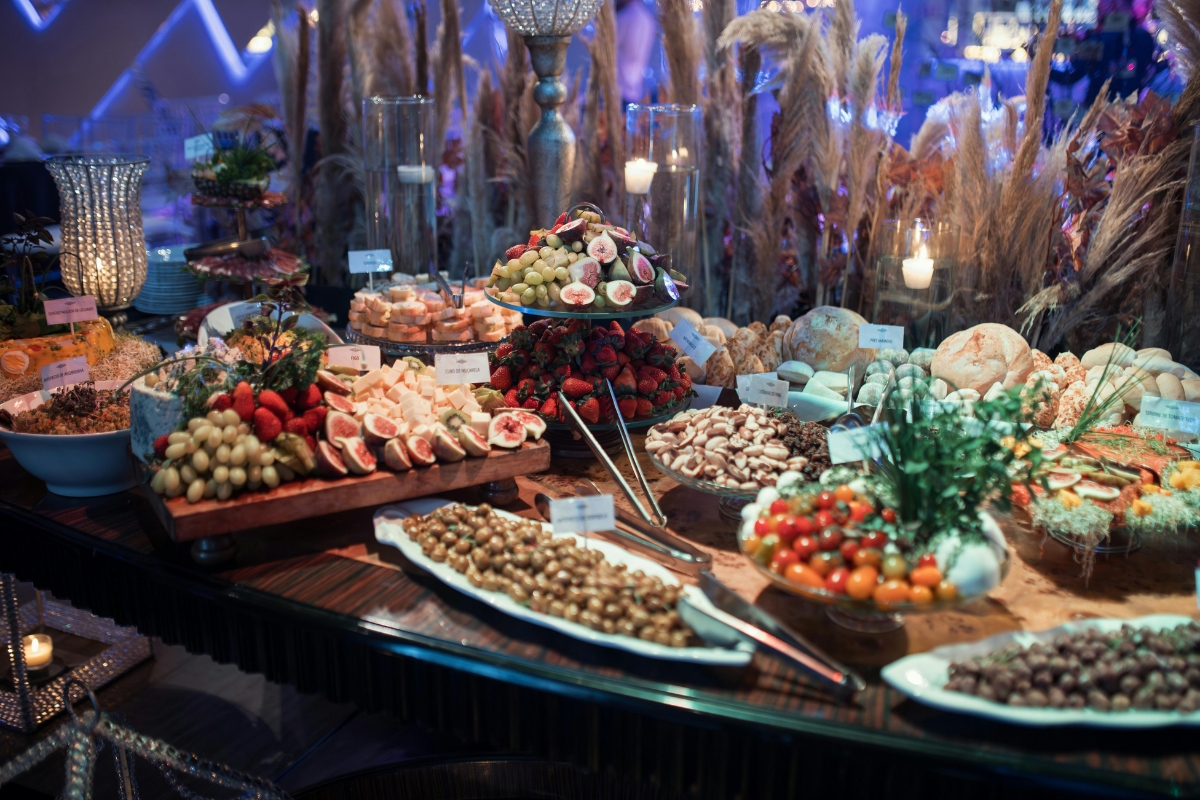
Creating the right atmosphere in a VIP dining space is just as important as the food itself. The goal is to make guests feel like they’re getting something truly special—an escape from the crowd and an environment where they can relax and enjoy the festival in comfort.
Start by matching the décor to the festival’s overall theme. For a rock festival, that might mean using bold colors, industrial-style fixtures, and custom murals or graffiti-inspired artwork. At a jazz or classical event, go with more refined elements like soft lighting, neutral palettes, and elegant floral arrangements. Every detail, from the furniture to the wall art, should reinforce the event’s tone.
Lighting is a big part of the experience. During the day, natural light or soft ambient lighting can keep the space bright and welcoming. As the sun sets, switch to warmer tones or dimmed overheads to create a more intimate setting. Use string lights, lanterns, or LED installations to guide the mood into the evening without being too harsh.
Comfort should never be an afterthought. Choose chairs and tables that are both stylish and functional. Plush cushions, shaded areas, and a layout that encourages conversation help guests settle in and stay longer. A mix of seating types—from high-top tables to lounge-style setups—can give people options depending on their mood.
Don’t overlook the small details. Table settings should feel intentional, with cloth napkins, reusable dishware, and touches like fresh herbs or small floral pieces. These subtle upgrades reinforce the idea that the VIP space is a cut above the rest of the festival.
Add-ons like private restrooms, dedicated staff, and separate entry points go a long way in creating a seamless, upscale experience. These features remove the friction that often comes with large events and allow guests to enjoy their time without hassle.
For a more dynamic environment, consider light entertainment within the space—maybe an acoustic musician, a live painter, or digital art screens. These touches make the space feel alive without pulling attention away from the main stage.
Mastering Logistics for VIP Catering at Outdoor Music Events
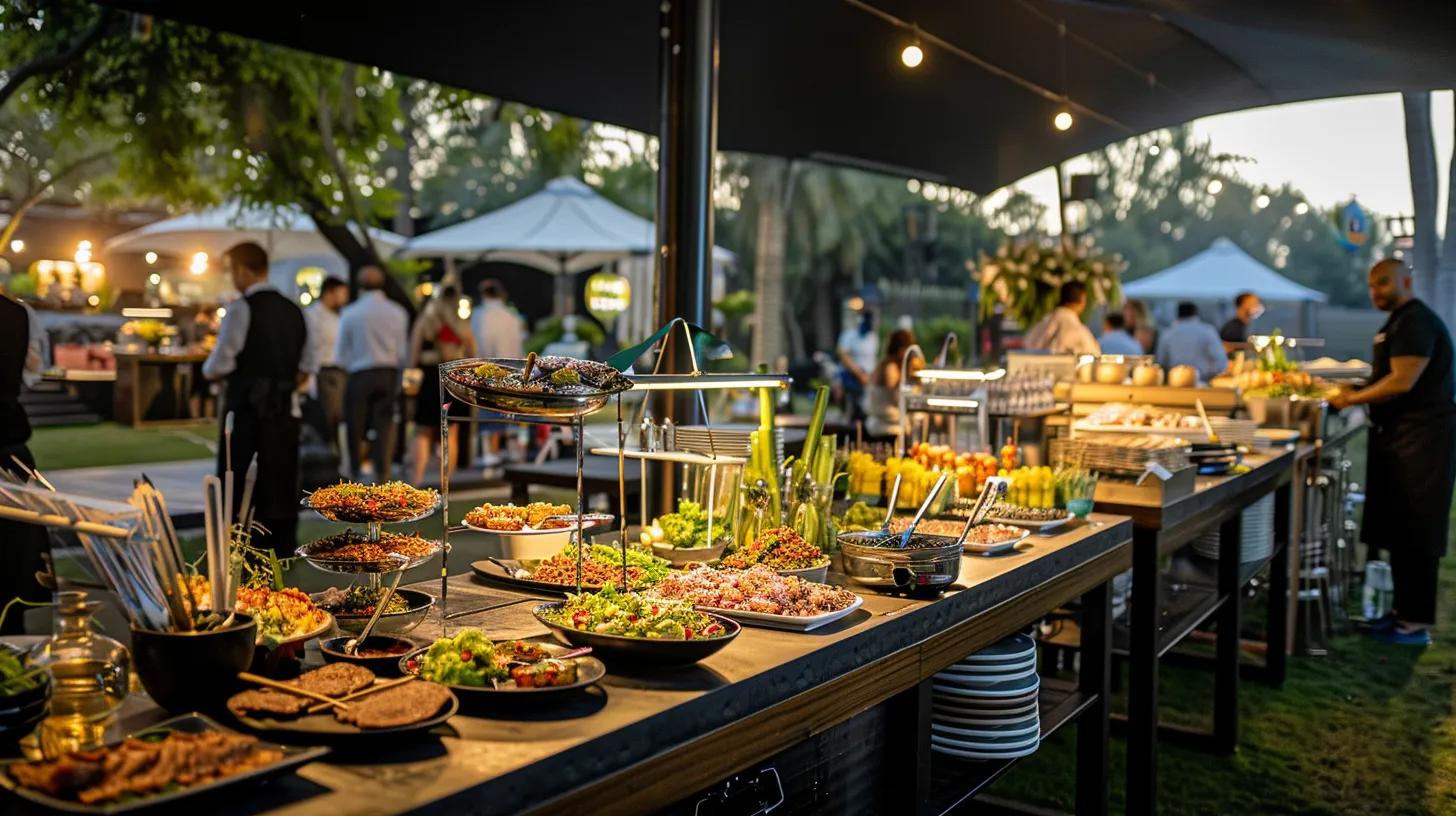
Running VIP catering at an outdoor music festival takes more than great food. Logistics are what make the experience run smoothly from start to finish. Every moving part—from kitchen setup to guest flow—needs careful coordination to keep service on time and quality consistent.
Start with smart site selection. The VIP dining area should feel private and exclusive but still be close enough for easy access. Avoid placing it near high-traffic pathways or loud stages to help maintain a relaxed atmosphere. Think about factors like power sources, terrain, and traffic flow before committing to a layout.
Once the space is chosen, plan for setup and breakdown. Identify loading zones, paths for staff movement, and where service stations will go. Knowing where everything belongs helps prevent last-minute scrambling and service delays.
Vendor coordination is also key. Build a reliable team by clearly outlining expectations, responsibilities, and timing. Use communication tools like two-way radios or messaging apps so staff can respond to issues without interrupting the guest experience. Schedule regular check-ins throughout the event day to stay ahead of any problems.
Food transport and storage are major concerns, especially outdoors. Use commercial-grade coolers, insulated containers, and mobile refrigeration units to protect ingredients and finished dishes from heat. Set up a shaded prep area and keep cold items separate from hot to maintain proper temperatures.
Weather is always a wildcard. Tents, canopies, and flooring mats can help protect both food and guests if the forecast changes. Plan ahead with extra coverings and backup setups, just in case.
Food safety is non-negotiable. Make sure your team follows standard health regulations, from frequent handwashing to proper food handling and equipment sanitation. Periodic inspections and up-to-date certifications not only prevent problems but also reinforce the professionalism of your operation.
Lastly, account for waste and cleanup. Designate areas for trash, recycling, and compost, and make sure they’re emptied regularly. A clean, well-managed VIP space says as much about your service as the food itself.
Strong logistics don’t just prevent problems—they help create a VIP experience that feels effortless. When everything runs behind the scenes as it should, guests are free to enjoy the music, the food, and the moment.
Sourcing and Managing High-Quality Vendors for Festival Catering

Strong vendor partnerships are critical for a successful VIP catering experience. Select vendors with proven track records and expertise in providing high-quality, locally sourced ingredients. Look for suppliers who understand the upscale demands of VIP catering and who can consistently deliver premium products.
Negotiate contracts that clearly outline expectations, including quality guarantees, delivery timelines, and contingency plans. Maintaining open communication helps build long-term relationships that lead to preferential pricing and reliable service, even during high-demand events.
Regular audits and documentation checks ensure vendors comply with health, safety, and quality standards, protecting your reputation and the overall guest experience.
| Vendor Factor | Evaluation Criteria | Benefit | Management Strategy |
|---|---|---|---|
| Supplier Reliability | Proven event experience, references | Consistent, quality delivery | Regular performance reviews |
| Ingredient Quality | Locally sourced, seasonal options | Fresh, gourmet offerings | Quality audits and tastings |
| Contract Negotiation | Price, delivery timelines, plans | Cost-effective, reliable service | Clear contractual obligations |
| Compliance | Food safety certifications, insurance | Regulatory adherence and guest safety | Periodic audits |
| Relationship Building | Regular meetings and tastings | Collaborative innovation and loyalty | Long-term partnerships |
Delivering Impeccable Service for the VIP Festival Experience
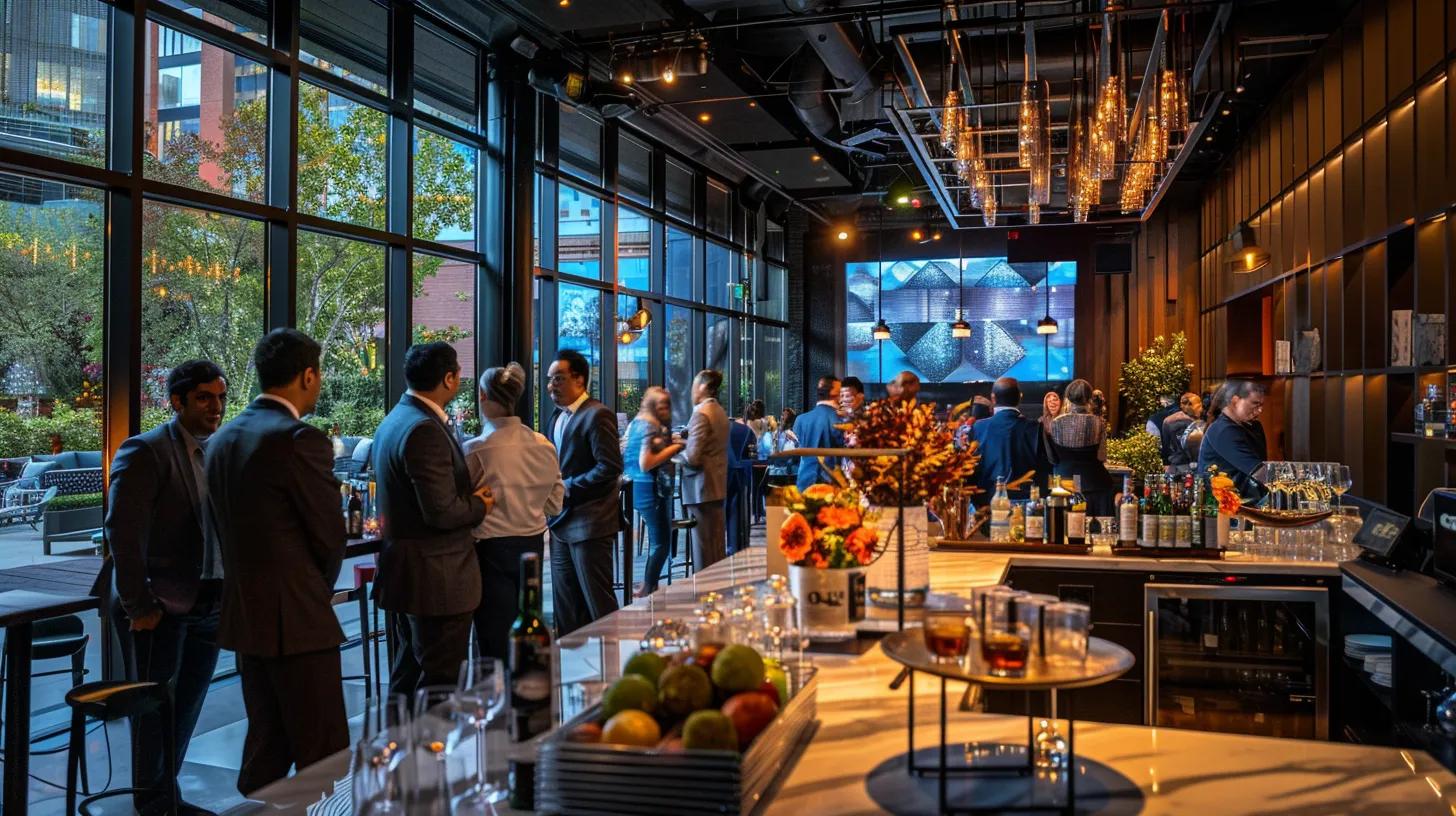
Delivering Impeccable Service for the VIP Festival Experience
Exceptional service is one of the most important parts of a successful VIP area at a music festival. It’s not just about getting the food and drinks right—it’s about making sure guests feel acknowledged, comfortable, and well taken care of from the moment they arrive.
That starts with a well-trained team. Staff should be prepared to handle high expectations with professionalism and attention to detail. Training should cover the basics of polite communication, table service, and order accuracy, but also go deeper into how to provide a more personalized experience. Greeting guests by name, remembering drink preferences, and offering timely check-ins all contribute to the feeling of exclusive treatment.
Speed and accuracy matter. Real-time order tracking and seating coordination tools can help streamline service and reduce delays. With digital platforms, servers and kitchen staff can stay in sync, making it easier to handle multiple orders at once without mix-ups. When guests don’t have to wait long for drinks or food, the entire experience feels more relaxed and well managed.
Small personal touches make a big difference. A chilled towel on a hot day, a complimentary dessert for someone celebrating a birthday, or even just a warm welcome at the entrance all add to the VIP feel. These moments are what many guests remember most, even more than the food itself.
Managing guest flow is also key. VIP areas can get crowded during peak times, so it’s important to have structured systems in place to seat guests quickly and avoid bottlenecks. Clearly designated staff roles, clear walkways, and thoughtful layout planning can prevent confusion and keep the environment comfortable.
Finally, when something goes wrong—and in live events, it sometimes will—it’s how the staff responds that matters. Having a system for quick issue resolution helps prevent small problems from turning into major complaints. Empowering staff to fix issues on the spot, or to quickly escalate them when needed, keeps service running smoothly.
By focusing on strong training, efficient systems, and a thoughtful approach to guest care, VIP service can stand out in a way that leaves a lasting impression long after the music stops.
Integrating Technology to Streamline VIP Catering Operations at Summer Music Festivals
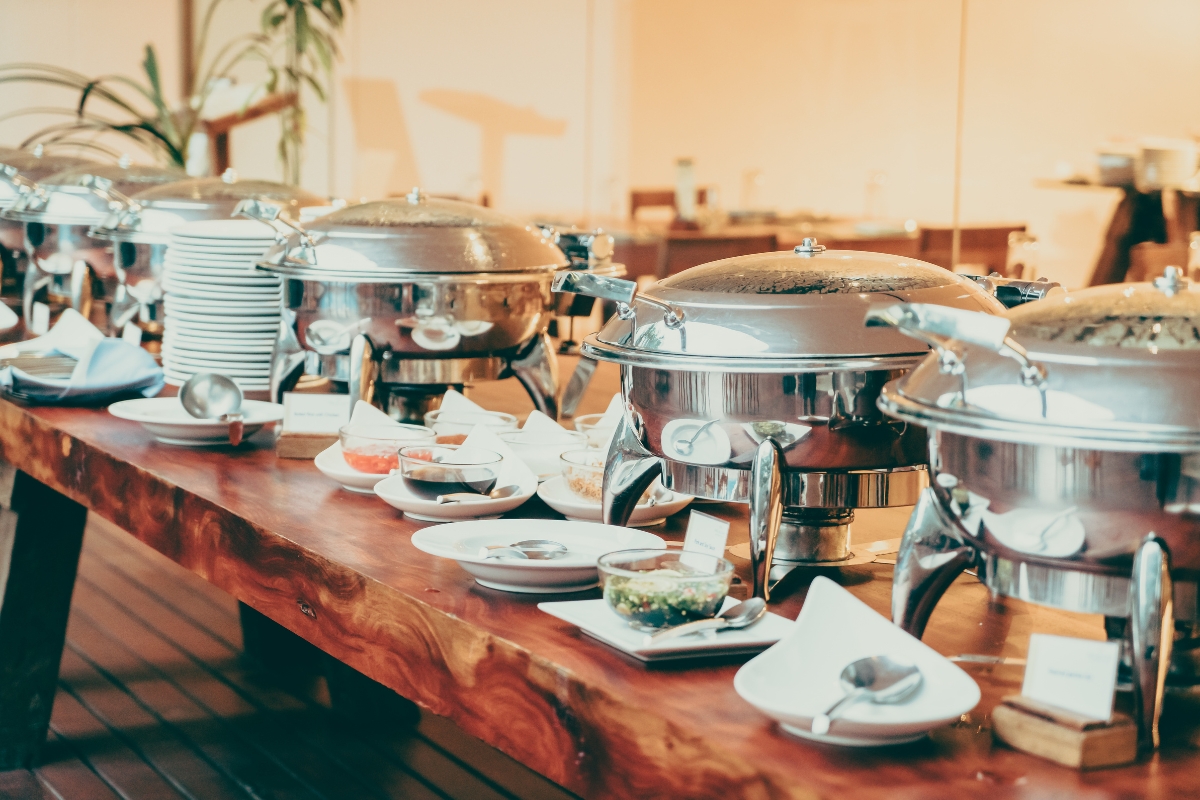
Technology plays an increasingly important role in delivering smooth and efficient VIP catering at music festivals. From behind-the-scenes logistics to guest-facing tools, digital systems help streamline service, improve communication, and enhance the overall experience.
One of the most noticeable upgrades is the shift to digital ordering and cashless payments. Mobile ordering platforms reduce wait times and minimize errors by allowing guests to place orders directly from their phones or digital kiosks. These platforms also make it easier for catering staff to manage incoming orders and prioritize service without juggling paper tickets or verbal requests.
Cashless payment systems, including tap-to-pay and mobile wallet options, keep transactions fast and secure. Eliminating the need for cash speeds up service lines and reduces the risk of accounting errors, especially during peak hours.
Digital menu displays add flexibility to food service operations. These screens can be updated in real time to highlight new items, remove sold-out dishes, or spotlight limited-time offerings. They also allow guests to view detailed information about ingredients, allergens, and pairings—enhancing transparency and guest satisfaction.
On the operations side, cloud-based event management software makes it easier to track inventory, monitor vendor schedules, and coordinate staffing. Having a centralized system keeps everyone on the same page, from kitchen teams to front-of-house staff. Real-time tracking helps prevent bottlenecks and allows for quick adjustments if something changes mid-event.
For staffing, communication apps help teams stay in touch across large festival grounds. Whether it’s alerting kitchen staff about increased demand for a certain dish or notifying servers of a VIP guest arrival, instant updates keep service responsive and coordinated.
Technology can also help gather guest feedback. Digital surveys and tablet stations make it simple for attendees to share their impressions before leaving the VIP area. These quick responses provide valuable insight and give organizers a chance to resolve minor concerns before they escalate.
Incorporating the right mix of technology doesn’t just make operations easier—it helps create a VIP experience that feels polished and well-managed. When the tools behind the scenes are working efficiently, the focus stays where it should be: on delivering exceptional food and service in a setting guests will remember.
Focusing on Sustainability in VIP Catering at Summer Music Festivals
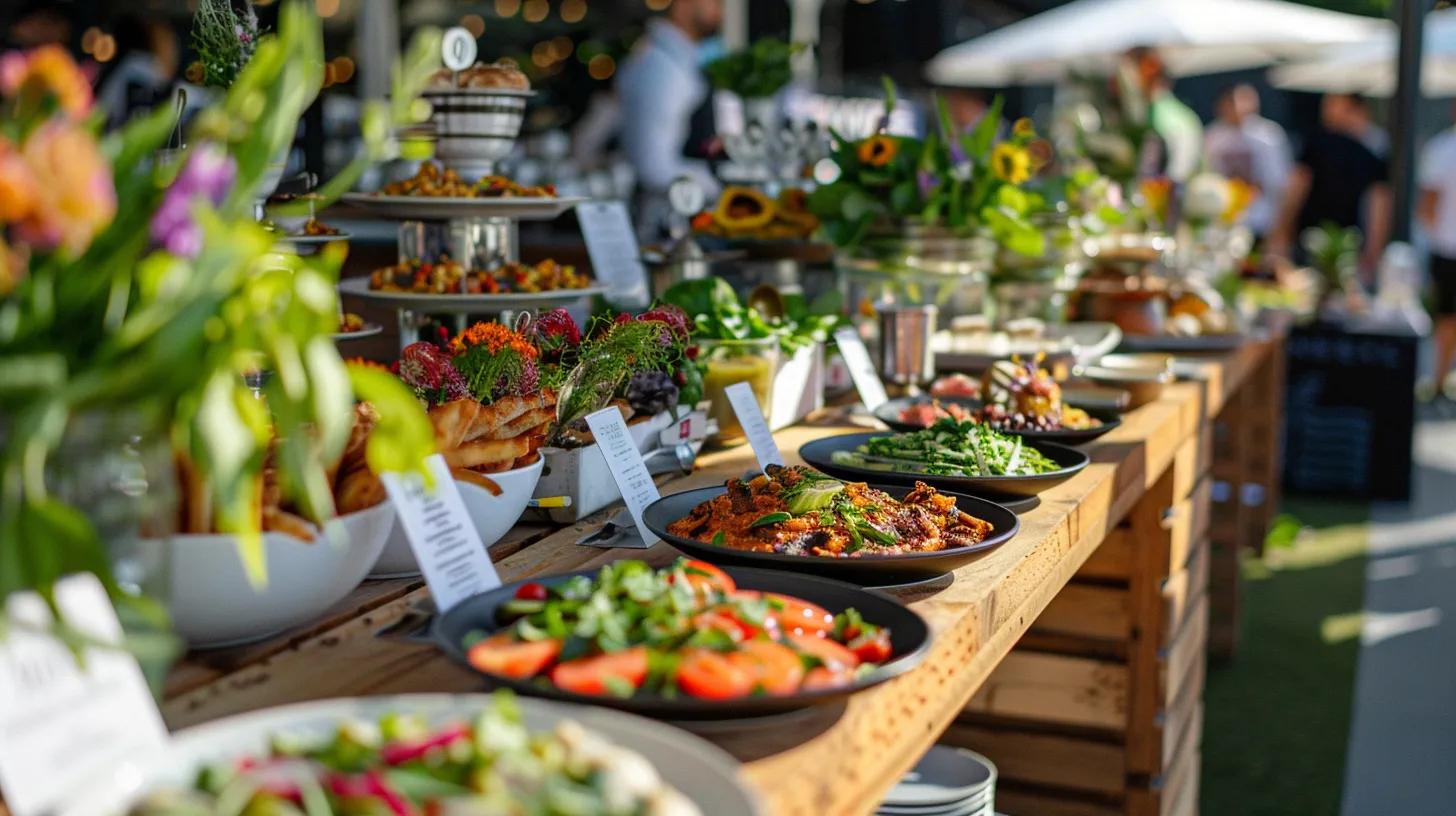
Sustainability is a growing priority for both festival organizers and VIP guests. Integrate eco-friendly practices into your catering by sourcing locally produced, seasonal ingredients that reduce your carbon footprint. Implement waste reduction strategies, such as composting organic waste and using biodegradable or reusable service ware.
Partner with vendors who share a commitment to environmental responsibility, using renewable energy sources and sustainable packaging. Clearly communicate your green initiatives through menu labels and on-site signage, educating guests about the benefits of sustainable practices. These measures not only support the environment but also enhance your brand image as a responsible and innovative service provider.
Key sustainability strategies include: – Sourcing eco-friendly, locally produced ingredients – Implementing waste reduction and recycling programs – Partnering with vendors who use sustainable practices – Transparently communicating sustainability efforts to guests – Optimizing operational practices to reduce resource consumption
Marketing and Promoting the VIP Catering Experience at Summer Music Festivals

An effective marketing strategy highlights the exclusivity and premium quality of your VIP catering service. Use high-quality visuals and concise messaging to showcase your gourmet menus, signature cocktails, elegant decor, and technological integrations. Collaborate with influencers and media partners familiar with high-end event culture to extend your reach.
Create attractive VIP packages and ticket tiers that bundle exclusive dining, perks, and priority access to event experiences. Utilize social media platforms like Instagram, Facebook, and LinkedIn to share behind-the-scenes content, live updates, and guest testimonials. This social proof builds credibility and attracts the right clientele.
| Marketing Approach | Key Feature | Benefit | Tactical Focus |
|---|---|---|---|
| High-Quality Visual Content | Professional photos and videos | Enhances brand prestige | Social media, digital ads |
| VIP Package Bundling | Exclusive offers and ticket tiers | Attracts premium clientele | Event websites, brochures |
| Influencer Collaborations | Partnerships with industry influencers | Expands reach and credibility | Sponsored posts, campaigns |
| Social Media Engagement | Live updates, guest testimonials | Builds community and trust | Instagram, Facebook |
| Guest Testimonials | Real reviews and success stories | Provides social proof | Website, print materials |
Measuring Success and Gathering Feedback for Future Summer Music Festival VIP Catering

Tracking performance and collecting feedback are essential steps in evaluating how well your VIP catering service delivered and how it can improve for the next event. These insights help fine-tune everything from menu planning to guest experience.
Start by sending out post-event surveys to VIP attendees. Keep the questions focused and clear, covering key areas like food quality, wait times, service interaction, seating comfort, and overall atmosphere. You’ll want to know what worked and what didn’t from the guest’s point of view. Offering an optional comment box gives attendees a chance to share details that multiple-choice formats can miss.
In addition to guest feedback, review your internal performance data. Look at total sales, average spend per guest, and profit margins. Compare these numbers to past events, if available, to assess whether any changes—like a revised menu or new layout—had a noticeable impact. Sales data can also highlight which items were most popular, which helps with planning future menus and inventory.
Social media can be a useful real-time tool for gauging sentiment. Look for posts, photos, tags, and comments that mention the VIP area. Positive mentions can confirm what you’re doing well, while any critical feedback offers a chance to respond and make adjustments.
Don’t overlook internal feedback. After the event, hold a debrief with your team and any key vendors. Talk through what went smoothly, what caused delays, and where communication could improve. Make sure everyone involved has a chance to share their observations. These conversations often reveal behind-the-scenes issues that guests may not see but that can affect the quality of service.
Keep a written summary of takeaways, organized by category—food service, logistics, guest experience, and staffing. This will serve as a reference when preparing for your next event. Make note of any ideas worth testing, along with problems that need solving.
By combining guest surveys, performance metrics, social media feedback, and team input, you get a full picture of how your VIP catering experience performed. The more you refine your approach, the more consistently you’ll deliver a high-quality experience that keeps guests coming back.
Frequently Asked Questions
Q: How can I ensure the VIP catering experience remains exclusive at music festivals? A: Begin by setting a clear vision aligned with the festival’s theme and designating separate VIP areas. Emphasize personalized service, custom menus, and upscale decor. Leverage technology for online ordering and contactless payments, and ensure regular staff training and feedback.
Q: What are the most important elements when designing a VIP menu for festivals? A: Focus on high-quality, locally sourced ingredients and innovative culinary concepts. Include gourmet dishes, signature cocktails, and diverse dietary options. Storytelling through each dish and interactive elements like live cooking stations further enhance the menu.
Q: How does technology improve VIP festival catering? A: Technology streamlines order management, reduces errors, and speeds up service through digital menus and cashless payments. It also aids in staff coordination and allows for real-time guest feedback, all of which elevate the overall service experience.
Q: What sustainable practices can be integrated in VIP catering? A: Use eco-friendly, locally produced ingredients, reduce waste through recycling and composting, and choose biodegradable service ware. Partner with vendors practicing sustainability and communicate these efforts to guests.
Q: How do I measure the success of a VIP catering service? A: Use guest surveys, financial analysis, social media monitoring, and staff debriefs to assess service quality, profitability, and operational efficiency. Track these metrics over time to drive continuous improvement.
Q: Can personalized service truly make a difference? A: Absolutely. Greeting guests by name, offering customized menu options, and accommodating special dietary needs create memorable, personalized experiences that foster loyalty and satisfaction.
Q: What role do vendor relationships play in VIP catering? A: Strong vendor partnerships ensure a steady supply of premium ingredients and reliable service. Clear communication, well-negotiated contracts, and regular performance reviews help maintain quality and support smooth event execution.
Final Thoughts
Elevating your festival presence with a VIP catering experience means delighting guests with gourmet bites, seamless service, and unforgettable flavor pairings—all tailored to the rhythm of your event. A Delightful Bitefull Catering brings the culinary creativity and logistical expertise to make your VIP pavilion the talk of the festival with our expert catering services. Call us at (770) 565-4146 or send us a message to craft a menu that hits all the right notes and keeps your VIPs coming back for more!


